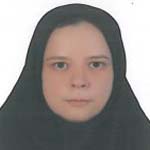Analysis of Occupational Accidents in the Manufacturing Sector in Semnan Province during 2013-2015
Occupational accidents have been regarded as the third cause of mortality around the world. This study examined the rates, types, and causes of occupational accidents in industrial sites.
In a cross-sectional design, 721 accident reports were examined in the manufacturing sites in Semnan which is located in the central part of Iran from 2013 to 2015. This study used the Social Security Organization database on workplace accident investigation reports. Frequency and percentage were used for the prevalence, whereas Chi-Squarewere used to identify the predictors of occupational accidents. SPSS version 21 was used for data analysis and 0.01 was considered as a cutoff for the significant level.
Accident Frequency Rates were 1.46, 1.54, and 1.40 in 2013, 2014, and 2015, respectively. Also, the Safe T-score was calculated between +3 and -3. The majority of accidents occurred in males in the age group 24-45, having the educational level of high school diploma or lower. Furthermore, most accidents occurred during the morning shift. Unsafe actions were determined as the major cause of accidents. The maximum reported statistics related to the type of accidents, injuries, and injured organs of the body were hitting sharp edges or obstacles (25%), bruising (30%), and upper limbs (44%). The results indicated a statistically significant relationship between shift work, accident type, inured organs, and injury type ( p =0.001).
This study revealed that workers’ behavior as a main contribution to accidents and injuries in the industry. Health and safety training should be designed according to worker duties.
-
Risk assessment of occupational safety and health hazards using job safety analysis: A case study of steel industry
Marzieh Beljikangarlou, Mostafa Naebi Taheri, Alireza Dehdashti, , Beshart ZadehAbbas
Journal of Preventive Medicine, -
An Investigation of the Sudden Release of Chlorine Gas in Jalalieh Water Treatment Plant through ALOHA
Hasan Bagheri *, , Neda Bakhtyari
Journal of Crisis and emergency management,



